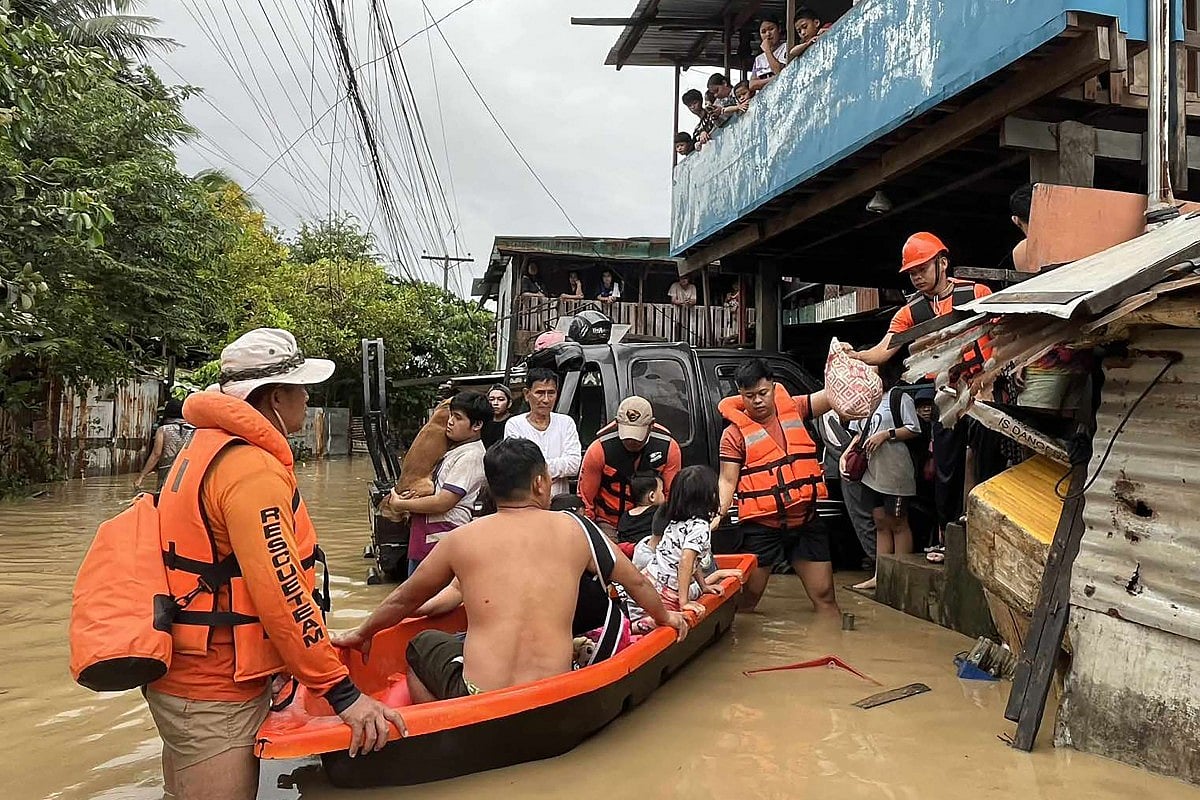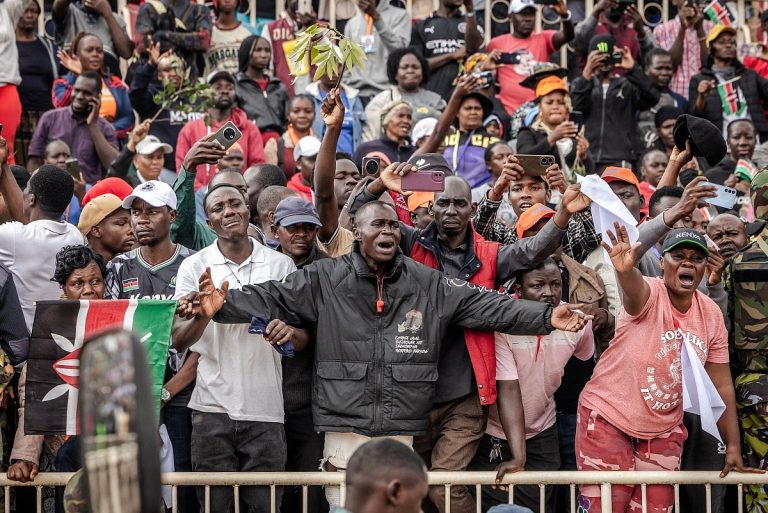Typhoon Kalmaegi Triggers Severe Flooding in Cebu, Philippin
Recent heavy rains in the central Philippines, driven by Typhoon Kalmaegi, have resulted in significant flooding, leading to tragic loss of life and widespread displacement. The island of Cebu has been particularly hard hit, with entire towns submerged and thousands of residents forced to evacuate.
Impact of the Flooding
As Typhoon Kalmaegi made landfall, it brought unprecedented rainfall to the region. In just 24 hours, Cebu City received 183 millimeters of rain, far exceeding its average monthly total of 131 millimeters. This deluge has caused severe flooding, sweeping away vehicles, shipping containers, and other debris, as documented in videos verified by news agencies.
Provincial governor Pamela Baricuatro described the situation as “unprecedented,” emphasizing that the floodwaters pose a greater threat than the storm’s winds. Local disaster officials reported that at least five fatalities have been confirmed, including two children found in Cebu City and others in Leyte and Bohol provinces.
Evacuations and Rescue Efforts
In response to the storm, nearly 400,000 people were preemptively evacuated from vulnerable areas. Many of these individuals were already living in temporary shelters following a recent earthquake that struck the island. Local authorities are working tirelessly to reach those trapped by the rising waters, but conditions remain perilous.
Don del Rosario, a resident of Cebu City, recounted the rapid rise of floodwaters, stating that by 4:00 AM, the situation had become uncontrollable. He noted that this was the worst flooding he had experienced in his 28 years living in the area.
Climate Change and Future Risks
Experts warn that climate change is exacerbating the intensity of storms like Kalmaegi. Warmer ocean temperatures contribute to the rapid strengthening of typhoons, while a warmer atmosphere holds more moisture, resulting in heavier rainfall. This trend poses a growing risk to the Philippines, which experiences an average of 20 storms each year, often impacting impoverished communities.
As of Tuesday afternoon, Typhoon Kalmaegi was moving westward through the Visayan island chain, with sustained winds of 130 kilometers per hour and gusts reaching 180 kilometers per hour. The Philippines has already met its annual average of storm occurrences, with meteorologists predicting the possibility of three to five additional storms before the end of December.
Personal Accounts of the Storm
In the Dinagat Islands, where Kalmaegi first made landfall, residents faced the storm with fear and uncertainty. Miriam Vargas, a single mother, described sitting in the dark with her children as the winds battered their home. The loss of electricity compounded their anxiety, leaving them unable to see or assess the damage outside.
The Philippines has a history of severe weather events, with two major storms impacting the region just last month. The aftermath of these storms often leaves communities struggling to recover, highlighting the urgent need for improved disaster preparedness and climate resilience.
FAQs
What areas were most affected by Typhoon Kalmaegi?
Cebu Island has been the hardest hit, with significant flooding reported in Cebu City and surrounding towns.
How many people were evacuated due to the typhoon?
Nearly 400,000 people were preemptively evacuated from areas at risk of flooding and storm damage.
What are the expected future weather patterns in the Philippines?
Meteorologists predict that the Philippines could experience three to five more storms before the end of December, following the average of 20 storms per year.
Conclusion
The devastation caused by Typhoon Kalmaegi underscores the ongoing challenges faced by the Philippines in managing natural disasters exacerbated by climate change. As rescue efforts continue, authorities are focused on providing aid to those affected and preparing for potential future storms. The situation remains critical, and ongoing support will be essential for recovery efforts.
The Philippine government has activated its National Disaster Risk Reduction and Management Council to coordinate response efforts and provide assistance to affected communities. Relief operations are underway, with local and national agencies distributing food, water, and medical supplies to those in need. The military has also been deployed to assist in rescue operations and to help restore order in the hardest-hit areas.
In addition to immediate relief efforts, long-term strategies are being discussed to enhance infrastructure resilience against future storms. This includes improving drainage systems, reinforcing buildings, and implementing better urban planning practices to mitigate the impact of flooding. The experience of Typhoon Kalmaegi serves as a stark reminder of the vulnerabilities faced by many regions in the Philippines, prompting calls for more comprehensive disaster preparedness initiatives.
Also Read:
Philippine Military Helicopter Crashes in Typhoon Relief







